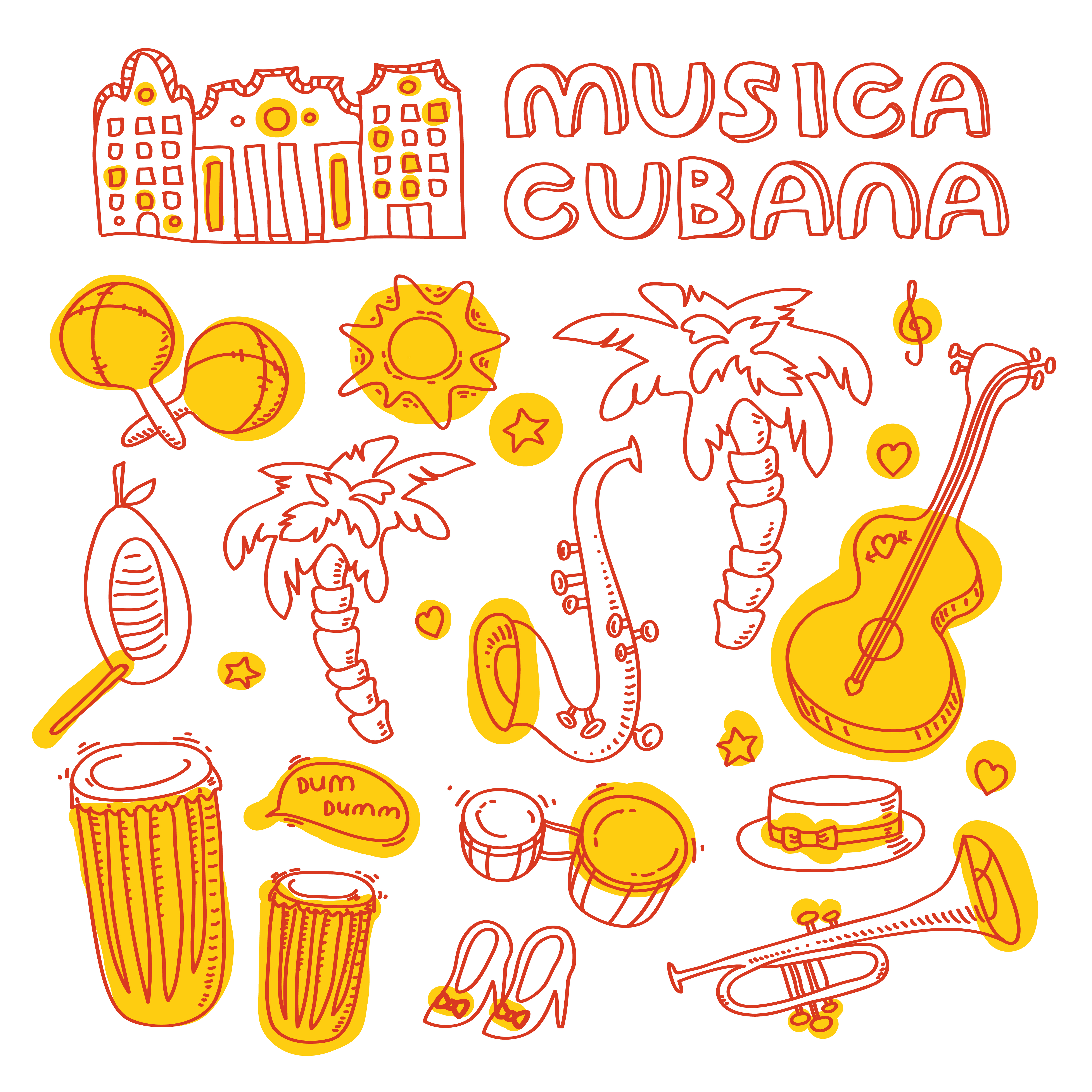
The caribbean island of Cuba is a nation with a rich musical heritage. This is largely due to the rich diversity of its people and the vast amounts of migration that characterise its history. The mixture of indigenous peoples, Spanish settlers, and the African slaves transported across the Atlantic have given Cuban music a unique voice, a voice that has in more recent times been exported the world over.
While there are many different styles of Cuban music, the majority share one thing in common: clave. Clave is at once an instrument, a specific rhythm, and a rhythmic concept that is the key to understanding how Cuban music is constructed.
This article will examine what exactly clave is, why it is so important, and how it is notated using Western notation, as well as giving a brief history of the origins of this most important concept.
Cultural Roots
Before we get on to discussing clave, I think it’s important to discuss in more detail the main migrations to Cuba and how they shaped the cultural landscape on the island.
Prior to the arrival of Christopher Columbus in 1492, Cuba had been home to indigenous Mesoamerican peoples with their own distinct language and culture. Like much of the Americas, Cuba was colonised by the Spanish during the 16th century, and this colonisation had a devastating impact on the indigenous population. The Europeans brought diseases that were previously not found in the Caribbean, and as the locals had no immunity to these diseases, the population was effectively wiped out.
However, this wasn’t the only way in which locals suffered. The Spanish colonisation was far from a friendly affair, and the Spanish had no intention of sharing the rich natural resources of Cuba with anyone else. The indigenous people were conquered and murdered or enslaved, and those who didn’t die from diseases such as smallpox and measles were forced into agricultural labour.
As Spanish colonisation developed and there was a greater demand for labour, African slaves, mainly from Northwest Africa, were shipped across the Atlantic to cultivate the island’s two main commodities: sugar and tobacco. The African slaves brought with them their own unique musical culture, and though the Spanish tried their hardest to prevent African cultural expression, the slaves made music out of whatever they could find; sticks, crates, their bodies, their voices etc. It was this African migration that provided the most important element in the development of Cuban music: clave.
In later years, once the Africans slaves were freed, they celebrated their African culture and were free to play their own instruments, most of which are still played in Cuba today. It is this rich mixture of cultures that paved the way for Cuban music’s unique voice.
Instruments
Cuban instrumentation is characterised by its African and Spanish migrations. Both sets of migrants brought instruments that were common in their countries of origin; the percussion section is mostly made up of instruments of African origin, while the pitched instruments are of Spanish origin.
African
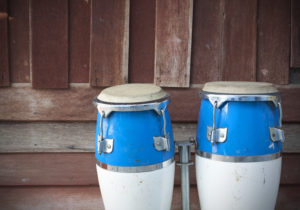
Congas
1. Congas - deep hand drums similar in size to the djembe, but with a much more “round” and not as ringing-tone.
The conga player gets a vast array of sounds by using different hand techniques to strike the drums, from high pitched cutting slaps to low thumping palm strokes. Congas come in different sizes and these drums have different names depending on the style of music they’re playing.
In guaguancó (a rumba subgenre) for example, the smallest drum is called the quinto (and is played by a soloist who plays improvised phrases), the middle sized drum is called the tres golpes, and the largest drum is called the salidor.
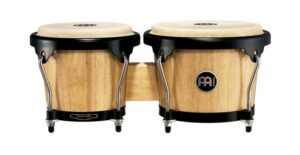
Bongos
2. Bongos - a pair of small (usually up to 10”) hand drums connected with a piece of wood.
In a lot of Cuban music, the bongocero (bongo player) will also have a large, low pitched cowbell, which he plays during certain sections of the song. The small, high pitched bongo is called the macho (male), while the large, lower pitched one is called the hembra (female).
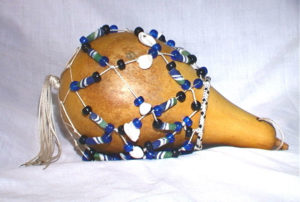
Shekeré
3. Shekeré - a large hollowed gourd covered in beads that are shaken to create a deep, low-pitched shaker sound. In rumba music, the shekeré usually outlines the first beat of each bar or phrase.

Güiro
4. Güiro - a smaller hollowed out gourd with grooves along its edge. The güiro player scrapes the guiro with a small stick.
5. Claves - a pair of small thick wooden sticks that are struck together to produce a clear, piercing tone that needs to be heard by the rest of the band.
6. Catá - a piece of hollowed out tree that’s struck with sticks to produce a soft woody clicking sound.
7. Bells - cowbells of varying sizes. Different sized bells are used in different styles of music. In chachachá, for example, the cowbell is small and has a very high pitch, whereas in abakua, the cowbell used (called “ekon”) is larger and lower pitched.
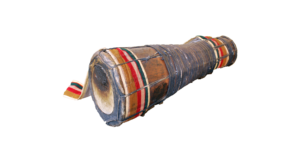
Batá
8. Batá - double sided hand drums played in rumba music. The batá are considered deeply spiritual and are usually only played by people deemed worthy amongst the santería (Afro-Cuban religion).
Spanish
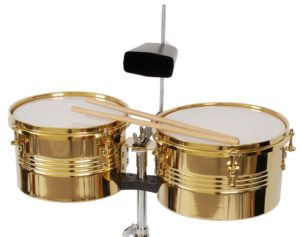
1. Timbales - perhaps the only Cuban percussion instrument that doesn’t have a direct link to Africa. Timbales are a pair of metal (usually steel or brass) single headed drums that have a high pitched cutting tone and are played with long, thin wooden sticks. Like the bongos, the timbales consist of a macho and an hembra drum. The timbalero (timbales player) most commonly plays the shell of the drum and usually plays the drum heads during fills or solos.
2. Guitar - 6 stringed instrument common in Spain. Spanish guitars use a combination of steel and nylon strings, unlike modern acoustic guitars which usually use steel strings.
3. Tres - a 3 stringed guitar-like instrument common in son music. The tres player plays a pattern called a montuno, a syncopated melodic phrase that outlines both the clave and the harmonic structure of the piece.
4. Trumpet - a brass instrument common in European musical styles.
5. Trombone - another common European brass instrument.
6. Double bass - a common European stringed instrument. In Cuban music, the bassist plays a pattern called a tumbao, which anticipates the harmony of the following bar by playing on beat 4, the beat before the chord change.
7. Piano - in more modern Cuban music, the piano takes a similar role to the tres by playing montunos.
Clave
Now let’s discuss the many meanings of the word “clave.”
Instrument
First we’ll discuss the clave as a physical instrument. As mentioned above, claves are short, thick wooden sticks that are struck together to produce a sharp, piercing sound that penetrates the rest of the band.
There are many different types of claves. Traditional African claves tend to be lower in pitch, as one of the sticks is thicker and hollowed out to produce a more open tone. Salsa claves tend to be longer and brighter in tone as they have to be heard over other bright instruments such as trumpets and other brass instruments.
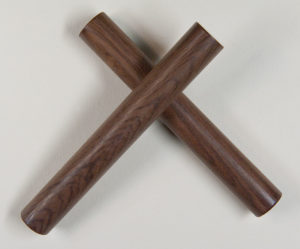
Rhythm
Now we will discuss the clave as a rhythm.
There are many different claves, some are more true to the original clave brought by the African slaves, others have been made less syncopated over time as they have been fused with other styles of music. Below I’ve notated the 3 main types of clave present in Cuban music today.
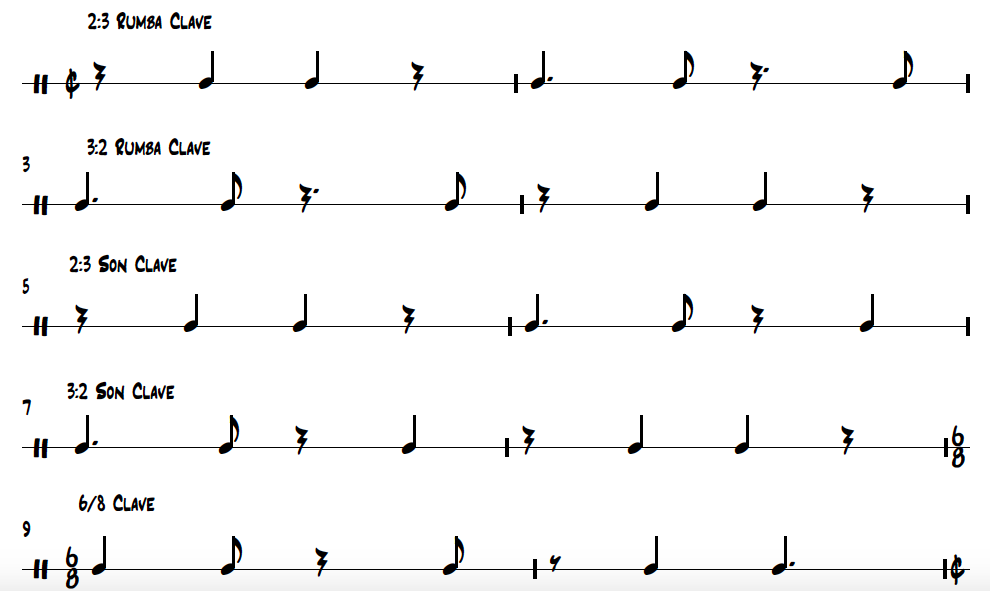
You’ll notice that each clave is a rhythm that is 2 bars in length, and that 1 bar always has 2 notes, while the other has 3. These bars can be switched around so either can start the phrase. When we talk about this switching of bars we’re talking about clave direction. If we start with the 2 note bar our clave direction will be “2:3,” whereas if we start with the 3 note bar our direction is “3:2.”. While different styles of music use different claves, they also tend to use different clave directions. “2:3” clave is far more common in son music, while “3:2” is more common in rumba.
We’ll discuss this in more detail in our future articles focusing on each style of Cuban music.
Concept
Next we will discuss clave as a rhythmic concept, just as we’d discuss backbeat in rock and pop music, or shuffle in blues music.
The word clave originates from the spanish word llave, meaning key, which is a fitting word to describe the function of clave: it’s the key to the music. The clave acts almost like a click track would when recording a drum part in a studio. It helps to keep the band in time and tells everyone where they are in the tune.
Unlike in Brazilian music, where rhythms similar to the clave are played loosely and with variations, in traditional Cuban music, the clave is played throughout the song without any variation whatsoever. Each instrument will play a 2-bar rhythm which links closely to the clave and the direction of this rhythm needs to fit the direction of the clave. Below you’ll see a common Cuban rhythm called cascara which highlights this point perfectly.

You’ll notice a clear correlation between the notes of the cascara and those of the clave. In fact, the cascara includes all the notes of the clave within itself and I’ve highlighted these notes with accents to clarify this point.
The clave is telling the timbalero (timbales player in salsa/son music) or catá (in rumba music) player which side of the pattern he or she must start with. This is true of every member of the band, not just the percussionists. We will look at some more specific examples when we look at each style independently in subsequent articles.
Conclusion
Of course, to understand any music you need to listen to it. In subsequent articles we’ll be looking more closely at specific styles of Cuban music (including danzón, chachachá, son, rumba, and more), but for the time being I’d recommend listening to some popular cuban bands such as Orquesta Aragón, Buena Vista Social Club, Clave y Guaguancó, Los Van Van, or Yoruba Andabo to give yourself an idea of how clave is used.
The bands above are an eclectic mix and should also show you just how diverse Cuban music is.
By understanding what the clave is, exactly what purpose it serves, and listening for it you will give you an advantage when learning each individual style.

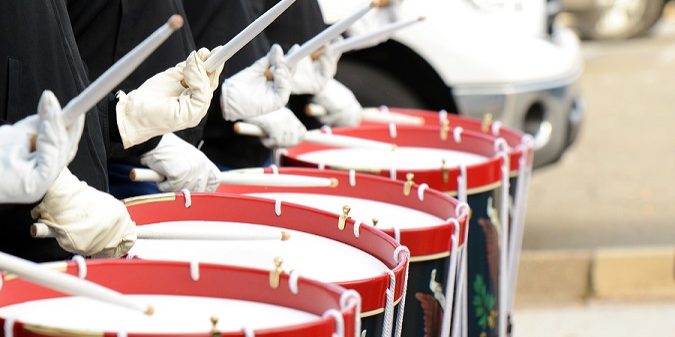
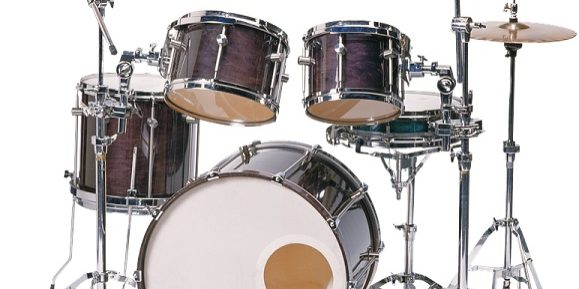
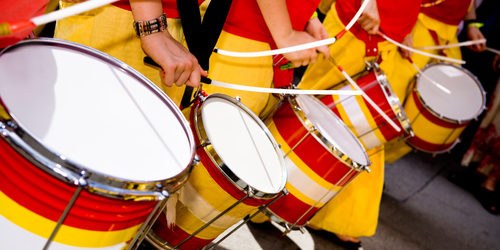
It’s hard to find experienced people in this particular
subject, however, you sound like you know what you’re talking about!
Thanks
Im so glad you found it informative.
Thanks very much
Brendan
I’ve been asked to compose an Afro-Cuban track for a PBS TV show, and though I agreed, I wasn’t overly familiar with the genre. This article was very helpful. Thank you!
I’m glad you found it useful Tom! Good luck with the composition.
We were to search up a good website for school, and this was one I rated 10. I hope you all the best, and I found all your information true. I hope to recommend this website to as many people as possible.
I’m glad you found it helpful Laura!
All the best
To you too!